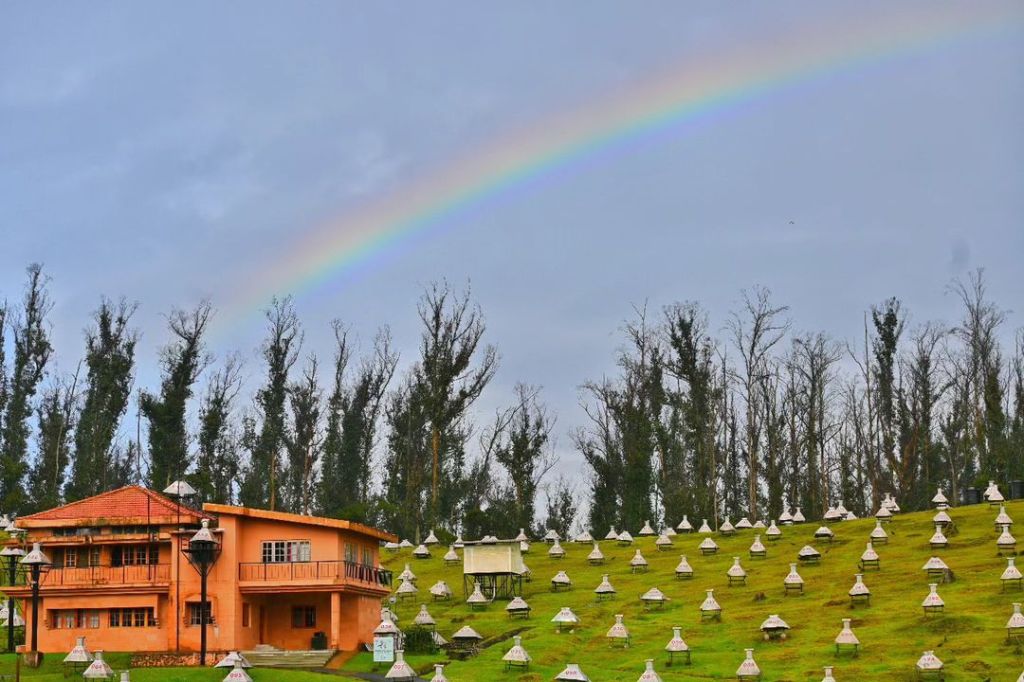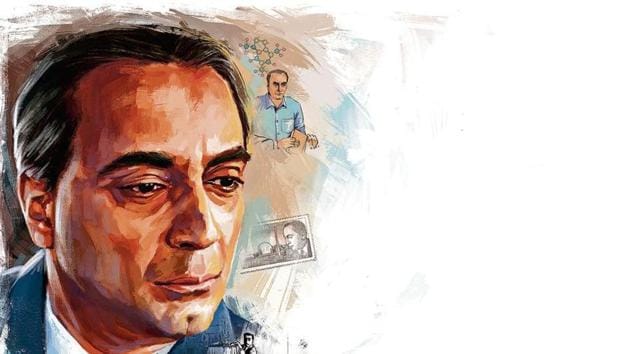Less than 10 kilometres away from the town of Udhagamandalam, commonly known as Ooty, in the scenic Nilgiri Hills of southern India, a strange sight is likely to bemuse any traveller on a casual foray out of the main town. On one of the grassy hills, there are numerous white buttons spread over the landscape, as if some species of giant mushrooms are being cultivated. On a closer look, they appear to be white-topped structures, each with some set of instruments beneath a metallic roof.
What are these?
We find the answer in Biman Nath’s book Homi J Bhabha: A Renaissance Man Among Scientists. The above structure, the author tells us, is a hidden laboratory, one that isn’t dissecting flora and fauna, but the very fabric of the universe. Here, amidst the tranquil hills, scientists from the Tata Institute of Fundamental Research (TIFR) conduct experiments with muons and air showers, unraveling the mysteries of cosmic rays.

These cosmic rays, a relentless barrage of high-energy particles bombarding Earth from outer space, have captivated scientists for over a century. And their story in India is intricately intertwined with the visionary physicist, Homi J Bhabha.
Let’s learn more about the story of this great man with the help of Bimal Nath’s wonderful monograph.
The Beginning
Homi Jehangir Bhabha was born in a Parsi family at the turn of the 20th century. The Parsi community in India has been quite westernised and so their lifestyle was quite different from, say, Hindus or Muslims. They were the first group to establish a close rapport with the British. That’s because, on the one hand, the British found them more acceptable, and on the other, they did not have the historical baggage of being the ruler or ruled. This led them to become the primary brokers and agents of the British, and learn the mechanisms of the stock market before the other communities.
That’s the setting in which Homi Bhabha grew in–amidst the privileges of a Parsi family in the 20th-century Bombay. Even as child, he had shown signs of being unique. Apparently, the young child hardly slept, which caused a lot of worry for his parents. But it was only because of his extraordinarily active brain and not a matter of concern, as the parents would soon find out.
While his family, like many Indian families today, envisioned a future for him as a successful engineer, a different kind of pull tugged at Homi’s curiosity. It wasn’t the world of gears and machines that fascinated him, but the unseen forces and hidden laws that governed the universe. So, what did the family do? Well, they agreed to support him in his chosen field of study only if he got a first class in the engineering exam. And we know what happened next.
Bhabha’s Foray into Cosmic Ray Research
Homi Bhabha was really interested in understanding the fundamental laws of nature. In the 1930s, there was a lot of excitement around cosmic rays, mysterious high-energy particles that zoom down to Earth from outer space. These were new and powerful forces no one fully understood.

Bhabha saw cosmic rays as a way to probe the universe’s deepest secrets. He believed studying them could help unlock the mysteries of elementary particles, the building blocks of everything around us. So, he dived into this new field, both with theoretical ideas and by setting up experiments to learn more about these cosmic visitors.
Homi Bhabha’s Return to India
Homi Bhabha’s journey back to India wasn’t exactly planned. The year was 1939 when Bhabha decided to take a quick trip back to India for a break. Then… the World War, of course. That made it difficult, if not impossible, for him to return to England. This seemingly random event turned out to be a pivotal moment for both Bhabha and Indian science.
While stuck in India, Bhabha didn’t just sit around. He saw a country brimming with potential, a land with a rich intellectual history but lacking in strong scientific infrastructure. He envisioned India not as a follower of other nations’ scientific advancements, but as a leader in its own right, pushing the boundaries of knowledge. This became his driving force.
Bhabha’s contributions were like the pillars that laid the foundation for a strong scientific India. Here’s a quick look at two major ones:
- Tata Institute of Fundamental Research (TIFR): During his time at the Indian Institute of Science, Bhabha noticed a crucial gap–the lack of a dedicated institute focused purely on fundamental research, the kind that explores the basic laws of nature. He believed this was essential for scientific progress. So, he started lobbying. Imagine him, a young scientist with a clear vision, approaching the Sir Dorabji Tata Trust, a major philanthropic organisation. He convinced them of the importance of his dream, and in 1945, TIFR was born. This institute became a breeding ground for some of India’s brightest scientific minds.
- Nuclear Science: Bhabha wasn’t just interested in the theoretical side of things. He understood the immense potential of nuclear energy, not just for weapons, but also for peaceful applications like power generation. He saw this as a way for India to become self-sufficient and develop its infrastructure. He played a key role in convincing the Indian government of the importance of nuclear science. This led to the establishment of the Atomic Energy program in 1954, putting India on the map in the field of nuclear science.
Conclusion
Homi Bhabha was more than a scientist, as the subtitle of Bimal Nath’s book puts it ‘a renaissance man among scientists.’ From the mind that unraveled the mysteries of cosmic rays to the leader who championed nuclear research, Bhabha’s legacy is as diverse as it is impactful. Today, when you flick on a light switch powered by nuclear energy, or hear news of India’s space missions, remember the man who came home for a visit and ended up changing the course of a nation’s scientific destiny.
